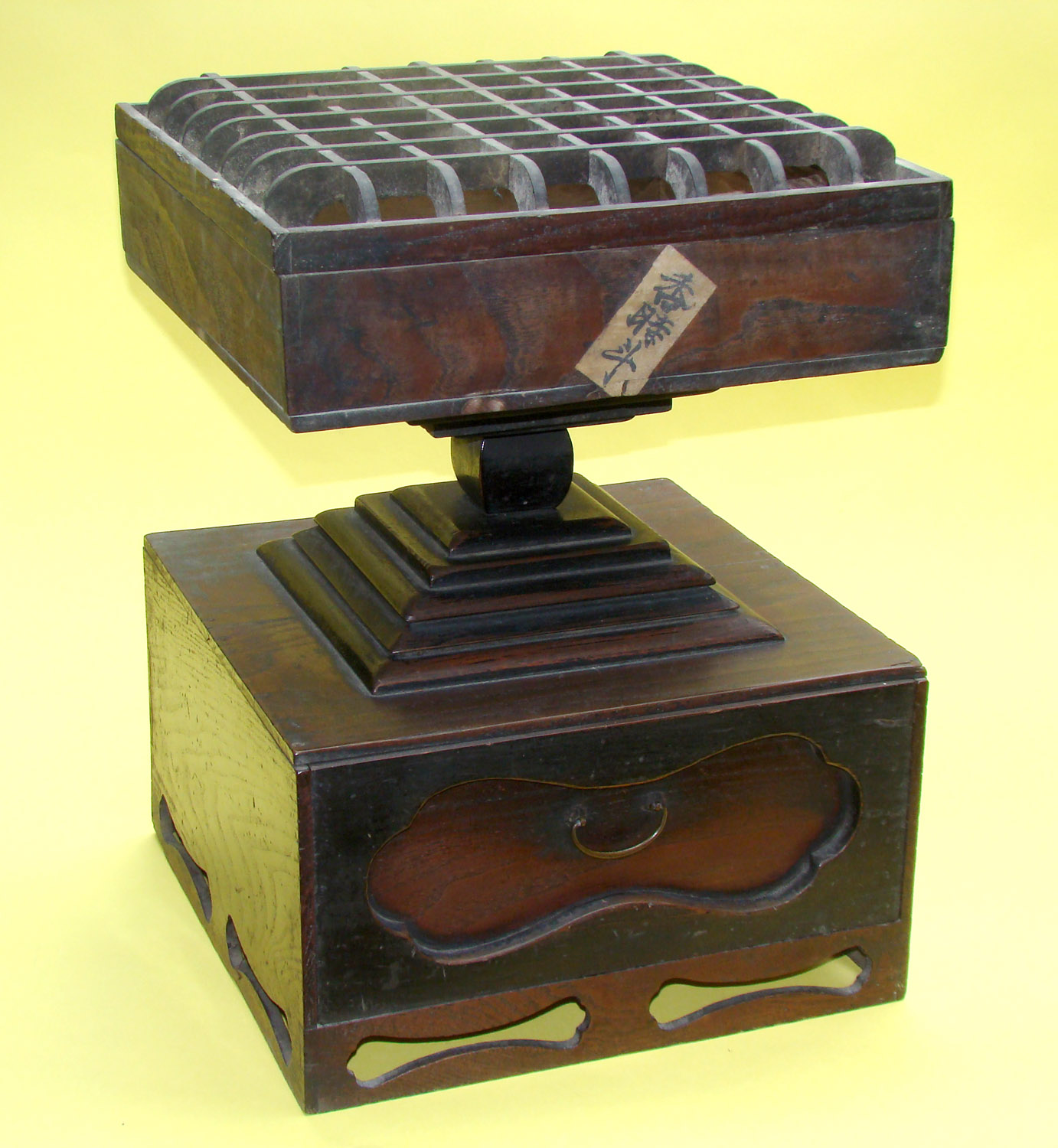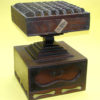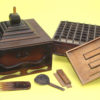JAPANESE “JOKOBAN” INCENSE CLOCK
Stock Number: 9153
$5500.
For sale, antique Japanese Edo period (c. 18th century) incense clock. Made of beautifully grained and stained wood, the clock functions as a time keeper determining the time by the position of the point of incense burning along a trail, or maze, in a geometric pan.
Dimensions
11-3/8 x 15-5/8 inches (29 x 40 cm)
Circa
c 18th century
Country of manufacture
Japan
Description
JAPANESE “JOKOBAN” INCENSE CLOCK, Edo period, c. 18th century. This handsome timekeeper is constructed of a beautifully grained and stained light weight wood (probably paulownia or cryptomeria) and measures 11-3/8″ (29 cm) square by 15-5/8″ (40 cm) tall. The lower section has attractive lozenge-shaped cutouts around the base, and a large matching drawer for tools and accessories. The upper section has a square wooden burning “pan” surmounted by an open wooden latticework cover formed as an 8 x 8 grid; the whole upper section is free to rotate, and lifts off easily. Four wooden tools are included: template, tamper, spatula, and five-tined comb. Condition is fine throughout, noting a couple of minor age cracks and slight heat damage to the pan and cover.
The jokoban was used in community life as well as in Buddhist temples, to measure extended spans of time (see Bedini, The Trail of Time, 1994, for comprehensive, lucid discussion of East Asian time measurement by incense burning). After covering the bottom of the pan with a uniform layer of fine wood ashes, and tamping this down, one impressed the template into the ash, then filled the pattern of trails with very slow-burning incense. The template is a “maze” of five long interconnected parallel lines. This was impressed four times, swiveling the pan by 90° each time, resulting in a kind of swastika design for the incense trail. After the incense was ignited at the starting point, the time was determined by the position of the point of burning along the trail; total burn time could be twenty hours. The latticework cover passes heat and smoke, and prevents breezes from accelerating the combustion. The swastika pattern, commonly found on Buddhist inscriptions, represents “many” or “longevity” or “infinity,” and “is ordinarily accepted as the accumulation of lucky signs possessing 10,000 virtues” (Bedini).
A fine example of this unusual horological device.
Ask the Dealer
Dealer information
 TESSERACT
TESSERACT
David and Yola Coffeen both have enjoyed academic careers, as planetary astronomer and as linguist/educator. But since 1982 (yes, 1982!) they have been full-time dealers in early scientific and medical instruments, under the name Tesseract. Selling primarily by catalogue (over 100 issued so far) they also have a web presence at www.etesseract.com, and can be contacted at [email protected].








